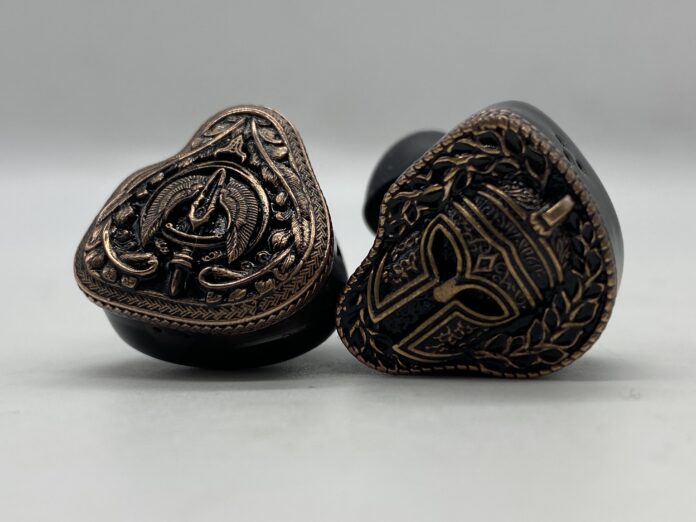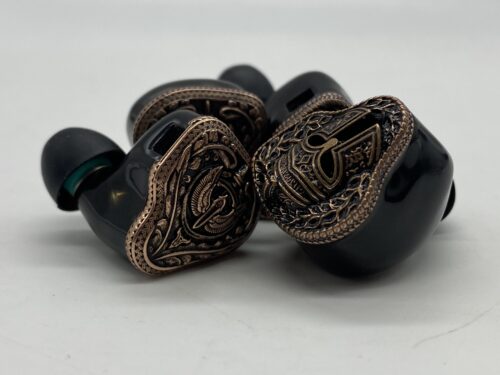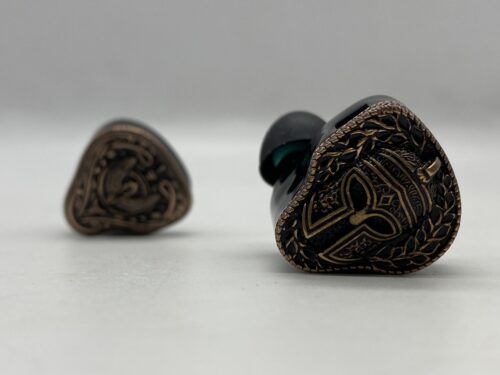When you’re looking at two of the most visually stunning and sonically powerful in-ear monitors on the market, choosing between them can be a real challenge. The FlipEars Legion and Aegis are both flagship models in the brand’s acclaimed Arsenal series, known for their luxurious design and premium sound engineering. Whether you’re an audiophile chasing ultimate detail or a bass head who craves thunderous lows, these IEMs promise an elite listening experience. But which one offers the best value, comfort, and overall sonic signature? In this detailed FlipEars Legion vs. Aegis comparison review, we break down every aspect, from build quality and accessories to soundstage and tonal balance so you can make the most informed decision for your ears and your budget.
What You Get
Both the FlipEars Legion and Aegis come with the same accessories.
- FlipEars IEMs
- Zipper Case
- 2-pin 4.4mm Cable
- Drawstring Ear Tip bag
- 6 Sets of Ear Tips
- Cleaning Tool
- Envelope With Warranty Info
Look & Feel
How do you compare two of the best-looking IEMs on the market? The Legion and Aegis both have impeccable designs, crafted with jewel-casted faceplates that convey a high level of artistry. They’re both incredibly detailed designs that fit the aesthetic philosophy of FlipEar’s Arsenal series. If none of that matters to you at all, then you might find that the Aegis has a better fit than the Legion. Although I found both to be comfortable and form-fitting, people with smaller ears might find the Legion more cumbersome than the Aegis.
Design
Both the Legion and Aegis use an Earquake bone conductor driver and a dynamic unit. The Legion adds a SPARK Electret tweeter for more high-frequency information. They both come terminated to 4.4mm plugs, so it is recommended you use a DAC/Amp that provides those output options.
Soundstage
In my reviews for the Legion and Aegis, I was wowed by how each model presented their soundstage and imaging. With the Legion being the first one I listened to, I thought there was no topping it, but the Aegis is so close to its quality that it makes the decision a lot more complicated. Here’s how I ended up discerning between the two. If you like your soundstage to have a wide stereo field with clear separation between the left and right channels, you will probably gravitate toward the Legion. In contrast, the Aegis is a bit reduced in terms of wingspan, but the dimension of the individual sounds forms a more spherical headspace. What both IEMs have in common is their scale. The Legion and Aegis present their soundstage and imaging with precision, height, and depth. You can’t really go wrong with either, but if I had to choose, I think the Legion is the most impressive. The imaging has more movement to it, and I like the floatier presentation compared to the Aeigis’ hard-set positioning.
Low End
Both the Legion and Aegis use bone conductor drivers, which greatly affects their bass performance. It almost guarantees that neither IEM lacks a significant low-end presence. It makes both the Legion and the Aegis the right choice for bass heads, but it’s not the exact same timbre. While both IEMs have an incredible sub-bass drive, the Legion has a more significant slam than the Aegis, but the Aegis has more separation. The way the Legion rumbles takes up a significant area of the sound signature and becomes its most dominant aspect. With the Aegis, the bass has a rumbly foundation, but it also leaves room for the rest of the sound signature to balance out the frequency response. This gives both IEMs a similar character and scale, but different levels of amplification. I preferred listening to individual bass instruments on the Legion, as notes are given more depth, but you’re not losing anything if you go for the more economical option.
Mids
The biggest differences between the Legion and Aegis appear in the midrange frequencies. With the bass so aggressive on the Legion, the mids take a bit of a step back in the sound signature, all without lacking integral detail and clarity. There are more defined notes and transients on the Aegis, which may come as a surprise if you listen to them one after another. You get more shape to the mids on the Aegis, while the Legion has a lower energy presentation in comparison. Both IEMs have a fullness to them, but it’s clear that the Aegis has a more articulate display.
Highs
Where the Legion and Aegis have their biggest divergence is in their treble. This is the area that might be the biggest deciding factor for you, as both IEMs feature different treble responses. If you’re looking for the smoothest high-end tone, the Aegis is the easiest to enjoy. The Legion has a brighter timbre, with a lot more cutting elements to its frequency response. Neither have sparkly or shimmery qualities, but the Aegis is much airier compared to the Legion’s highs which have a drive to them. The Legion doesn’t have harsh frequencies, but compared to the softer Aegis, the Legion has more edge to it.
Summary
Both the FlipEars Legion and Aegis represent the pinnacle of craftsmanship and sonic innovation in the IEM world. The Legion brings a wider, more dynamic soundstage with thunderous bass and a cutting-edge treble that excels in energetic listening. Meanwhile, the Aegis offers a more balanced and refined presentation, with articulate mids and an airy top end that’s easier on the ears for long sessions. If you want the most immersive and visceral experience, the Legion is hard to beat. But if you’re after clarity, comfort, and musicality, the Aegis might be the smarter and more versatile choice. No matter which path you take, both IEMs uphold FlipEars’ reputation for delivering high-performance audio with artistic flair.
The FlipEars Legion and Aegis are available at Audio46.
MAJORHIFI may receive commissions from retail offers.











